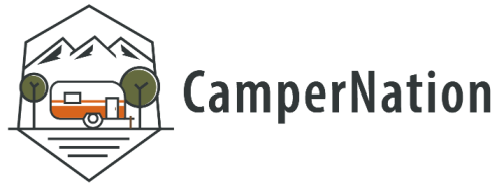Can You Use an Awning as a Tent? What You Need to Know
Ever fancied turning your caravan awning into a cosy tent? Yes, you absolutely can! While not a traditional choice, awnings make surprisingly versatile camping shelters. They're quick to set up, offer excellent weather protection, and can be more spacious than regular tents. Stick around to discover the clever tips and essential considerations.

Using Awnings as Tents
Camping with an awning brings a fresh perspective to outdoor shelter. These versatile structures protect against the elements while creating a welcoming space for relaxation and camping activities.
Suitable Awning Types
The market offers several awning styles, each bringing unique benefits to the camping experience.
Drive-Away Awnings and Annex Rooms
Drive-away awnings stand out as the perfect companion for adventurous campers. These clever designs attach and detach from vehicles smoothly, maintaining a base camp while allowing freedom to explore. Annex rooms expand the possibilities by adding private sleeping quarters to the setup.
Air Awnings with Sleeping Pods
Modern camping embraces air awning technology with integrated sleeping areas. The beauty lies in their swift inflation system and dedicated sleeping zones. No more wrestling with complicated pole systems or time-consuming setups.

Safety Considerations
Weather Resistance and Ground Conditions
Smart camping requires careful planning:
- Monitor weather forecasts religiously
- Select stable, level ground
- Secure anchoring points thoroughly
- Test waterproofing before trips
Comfort and Convenience
Daily camping life demands practical thinking:
- Map out sleeping arrangements
- Consider storage solutions
- Plan for bathroom access
- Think about temperature changes
Setting Up an Awning as a Tent
Ground Preparation and Bedding
Success starts from the ground up:
- Remove any ground hazards
- Lay quality groundsheets
- Create flat sleeping surfaces
- Add comfortable bedding options
Ventilation and Insect Control
Fresh air matters in any camping setup:
- Install protective screens
- Create airflow channels
- Seal entry points effectively
- Add portable ventilation
Lighting and Heating
Comfort extends beyond daylight hours:
- Set up reliable lighting
- Choose safe heating methods
- Check power connections
- Prepare for temperature swings

Alternatives to Using an Awning as a Tent
Dedicated Camping Tents
Purpose-built tents offer tried-and-tested camping solutions.
Advantages and Disadvantages
Traditional Tent Benefits:
- Built specifically for overnight stays
- Superior temperature control
- Enhanced security features
- Better privacy options
Traditional Tent Drawbacks:
- Compact sizes
- Limited flexibility
- Longer setup requirements
- No vehicle integration
The final choice between awning camping and traditional tents depends on specific camping needs. Consider trip duration, expected weather, and required facilities when planning the next outdoor adventure.
This approach to camping might seem unconventional, but it opens up exciting possibilities for outdoor stays. The key lies in matching the shelter choice to camping style and comfort requirements. With proper preparation, an awning can transform into an excellent tent alternative.
- Can you leave a caravan awning up all year?
- Can you sleep in caravan awnings?
- How do caravan awnings work?
- Is a caravan awning worth it?
- What is the alternative to a caravan awning?
- Can you use a caravan awning in winter?
- What is an awning for camping?
- Are caravan awnings any good?
- Are caravan awnings a good idea?






Leave a comment